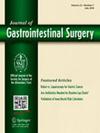First clinical report of the international single-port robotic rectal cancer registry
IF 2.2
3区 医学
Q3 GASTROENTEROLOGY & HEPATOLOGY
引用次数: 0
Abstract
Background
Rectal cancer surgery remains a significant technical challenge. The development and implementation of a new technology offer hope for more accurate and precise surgery. To evaluate whether single-port robotic (SPr) technology helps achieve this goal, an international SPr registry was established. This study reported short-term clinical and oncologic outcomes from an international SPr registry for rectal cancer.
Methods
A review of a prospective international registry of SPr technology approved for colorectal surgery with an investigational design exemption was conducted. Patients with rectal adenocarcinoma who had resection for curative intent using the SPr platform between November 2018 and September 2022 were included. Frequency statistics described patient and tumor characteristics and intraoperative, oncologic, and clinical outcome variables. The main outcome measure was the quality of the total mesorectal excision (TME) specimen. The secondary outcome measures were intraoperative conversion and 30-day postoperative morbidity and mortality.
Results
A total of 113 SPr procedures for rectal cancer were performed at 2 centers by 4 colorectal surgeons. Of note, 9 local excisions were excluded, leaving 104 cases analyzed. The cohort consisted of 53 men (50.96%), had a mean age of 60.00 years (SD, 11.29), and had a body mass index of 25.80 kg/m2 (SD, 6.18). The most common T stage was 3 (55 [52.8%]), followed by 2 (19 [18.26%]). More than 60% of patients had preoperative neoadjuvant chemoradiation. The mean tumor distance from the anorectal ring was 2.90 cm (SD, 2.62), and the mean tumor size was 4.52 cm (SD, 1.82). The procedures performed included transanal abdominal transanal/transanal TME (52 [46%]), low anterior resection (49 [43.3%]), and abdominoperineal resection (3 [2.7%]). The mean operating time was 168.0 min (SD, 56.9). There were no intraoperative complications and 2 (1.9%) conversions to laparoscopy. There was a median of 2 incisions, with a mean size of 2.30 cm (SD, 1.31). The TME specimens were complete in 101 cases (97.1%) and near complete in 3 cases (2.9%). The R1 rate was 3.8%, with 3 positive distal margins and 1 positive circumferential margin. Postoperatively, there were 15 total complications, of which 4 were major complications and 11 were minor complications. There were 2 readmissions (ileus and small bowel obstruction). There were no mortalities.
Conclusion
This early international experience with the SPr procedure showed that it is a safe and effective technique for distal rectal cancers, with excellent specimen quality. The complication and conversion rates observed with other techniques and platforms used in rectal cancer surgery were not demonstrated. An international registry was used to better understand the opportunities and limitations of SPr technology in rectal cancer surgery as the technology is adopted and applied more widely. Although structured training and controlled trials will be required to develop best practices and define the use of the SPr technology, initial international registry data are encouraging.
国际单端口机器人直肠癌登记处的第一份临床报告。
背景:直肠癌手术仍然是一项重大的技术挑战。新技术的开发和应用为更准确、更精确的手术带来了希望。为了评估单孔机器人技术(SPR)是否有助于实现这一目标,我们建立了一个国际SPR机器人注册中心。本研究报告了国际直肠癌 SPR 登记的短期临床和肿瘤学结果:对根据研究设计豁免 (IDE) 批准用于结直肠手术的 SPR 手术的前瞻性国际登记进行了审查。纳入了2018年11月至2022年9月期间使用SPR平台进行根治性切除的直肠腺癌患者。频率统计描述了患者和肿瘤特征以及术中、肿瘤学和临床结果变量。主要结局指标是TME标本的质量。次要结果指标为术中转换、术后30天发病率和死亡率:113例SPR直肠癌病例在2个中心由4名结直肠外科医生进行了手术。排除了 9 例局部切除术,分析了 104 例病例。男性占 50.96%,平均年龄为 60.0 岁(SD 11.29),体重指数为 25.8kg/m2(SD 6.18)。最常见的 T 分期是 3 期(55 人,占 52.8%),其次是 2 期(19 人,占 18.26%)。超过60%的患者在术前接受了新辅助化疗。癌症距离肛门直肠环平均为 2.9 厘米(标清 2.62),大小为 4.52 厘米(标清 1.82)。手术方式包括TATA/TaTME(n=52,46%)、低位前切除(n=49,43.3%)和腹会阴切除(n=3,2.7%)。平均手术时间为 168 分钟(标清 56.9)。术中无并发症,有2例(1.9%)转为腹腔镜手术。手术切口中位数为2个,平均大小为2.3厘米(标准差为1.31)。97.1%(n=101)的TME标本完整,2.9%(n=3)的标本接近完整。R1率为3.8%,其中3例远端和1例周缘阳性。术后共出现15例并发症,其中4例为大并发症,11例为小并发症。2例再次入院(回肠梗阻和小肠梗阻)。无死亡病例:SPR的早期国际经验表明,它是治疗直肠远端癌症的一种安全有效的技术,标本质量极佳。其他用于直肠癌手术的技术和平台的并发症和转归率并未得到证实。随着 SPR 技术在直肠癌手术中得到更广泛的采用和应用,我们希望通过国际注册,更好地了解 SPR 在直肠癌手术中的应用机会和局限性。虽然还需要进行结构化培训和对照试验,以制定最佳实践并确定 SPR 的使用,但初步的国际登记数据还是令人鼓舞的。
本文章由计算机程序翻译,如有差异,请以英文原文为准。
求助全文
约1分钟内获得全文
求助全文
来源期刊
CiteScore
5.50
自引率
3.10%
发文量
319
审稿时长
2 months
期刊介绍:
The Journal of Gastrointestinal Surgery is a scholarly, peer-reviewed journal that updates the surgeon on the latest developments in gastrointestinal surgery. The journal includes original articles on surgery of the digestive tract; gastrointestinal images; "How I Do It" articles, subject reviews, book reports, editorial columns, the SSAT Presidential Address, articles by a guest orator, symposia, letters, results of conferences and more. This is the official publication of the Society for Surgery of the Alimentary Tract. The journal functions as an outstanding forum for continuing education in surgery and diseases of the gastrointestinal tract.

 求助内容:
求助内容: 应助结果提醒方式:
应助结果提醒方式:


